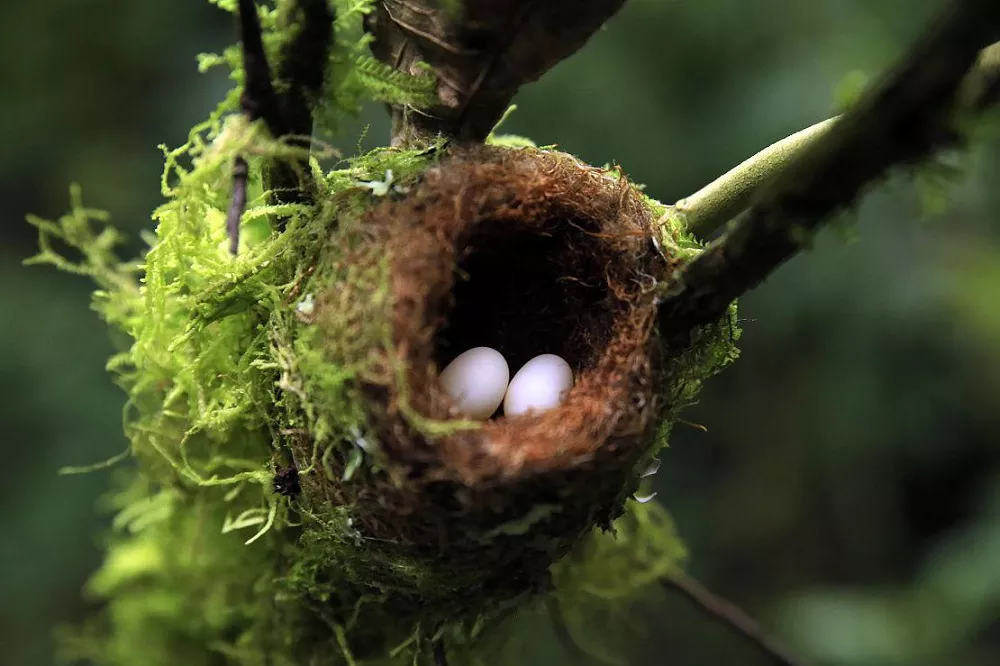Hummingbirds, renowned for their vibrant plumage and agile flight, captivate nature enthusiasts worldwide. As one of the smallest bird species, their delicate size raises curiosity about the proportions of their eggs. In this article, we delve into the fascinating world of hummingbird eggs, exploring their size, characteristics, and the remarkable adaptations that ensure the successful development of these tiny avian offspring.
The Size of Hummingbird Eggs:
Given the diminutive size of hummingbirds, it is no surprise that their eggs are among the smallest in the avian world. On average, hummingbird eggs range in size from 0.5 to 1.3 centimeters (0.2 to 0.5 inches) in length. To put it into perspective, they are similar in size to a small jelly bean or pea.
Hummingbird eggs are proportionate to the body size of the mother bird, typically representing approximately 10% of her body weight. The precise size and shape of the eggs can vary between species, but they are generally elongated or elliptical in shape, tapering at one end and slightly rounder at the other.
Coloration and Camouflage:
Hummingbird eggs exhibit a diverse range of colors and patterns, often reflecting the environment in which the nest is built. Common colors include white, cream, and pale blue, providing effective camouflage and blending in with the nest materials and surrounding vegetation.
The subtle speckles or blotches on the eggs may serve as additional camouflage, helping to conceal them from predators. The specific markings and patterns can vary between hummingbird species, but they generally provide effective protection for the vulnerable eggs.
The Incubation Period of Hummingbird Eggs:
Once laid, hummingbird eggs require a period of incubation to develop and hatch into chicks. The incubation period varies among species and environmental conditions but generally ranges from 14 to 23 days.
During this incubation period, the female hummingbird is responsible for keeping the eggs warm and protected. She spends most of her time sitting on the nest, using her body heat to maintain an optimal temperature for the developing embryos. The female may leave the nest intermittently to forage for food and hydrate, but she diligently returns to ensure the eggs are properly cared for.
Chick Development and Hatching:
As the incubation period progresses, the embryos within the eggs undergo remarkable transformations. Eventually, the chicks break through the eggshell, emerging into the world as tiny and naked hatchlings. The hatching process is facilitated by the chicks using an egg tooth—a small, temporary structure located on the upper beak—to crack open the shell.
Upon hatching, the chicks are altricial, meaning they are relatively undeveloped and require extensive parental care. They are blind, featherless, and dependent on their parents for warmth, protection, and nourishment. Over the course of several weeks, the chicks undergo rapid growth and development, with their parents tirelessly providing food and guidance until they fledge and become independent.
The Importance of Hummingbird Eggs:
Hummingbird eggs play a crucial role in the survival and sustainability of these tiny birds. The size of their eggs allows them to lay multiple eggs per clutch, with some species laying up to two eggs at a time. This high reproductive rate helps to offset the high mortality rate that hummingbirds face due to predation, disease, and habitat loss.
Furthermore, the small size of the eggs means that they require less energy and resources to produce and incubate than larger bird eggs. This energy efficiency allows female hummingbirds to focus on other aspects of raising their young, such as finding food and protecting the nest.
Conclusion:
In conclusion, hummingbird eggs are incredibly small, measuring around 0.5 inches in length and weighing just 0.4 grams. Despite their small size, these eggs contain all the nutrients and materials needed to support the development of a growing embryo. They come in a variety of colors, depending on the species, and are incubated by the mother bird for between 14 and 23 days.
Hummingbird eggs play a vital role in the survival and sustainability of these tiny birds. Their small size allows for higher reproductive rates, which helps to offset the high mortality rate that hummingbirds face. Additionally, their energy efficiency allows female hummingbirds to focus on other aspects of raising their young. Understanding the importance of hummingbird eggs can help us to appreciate these incredible birds and work towards their conservation and protection.
Related topics:
- Hummingbird Nests: All You Need To Know
- 7 Fun Facts About Hummingbirds: You Must Be Interested
- How long do Hummingbirds live?


 Facebook
Facebook  Instagram
Instagram  Youtube
Youtube 